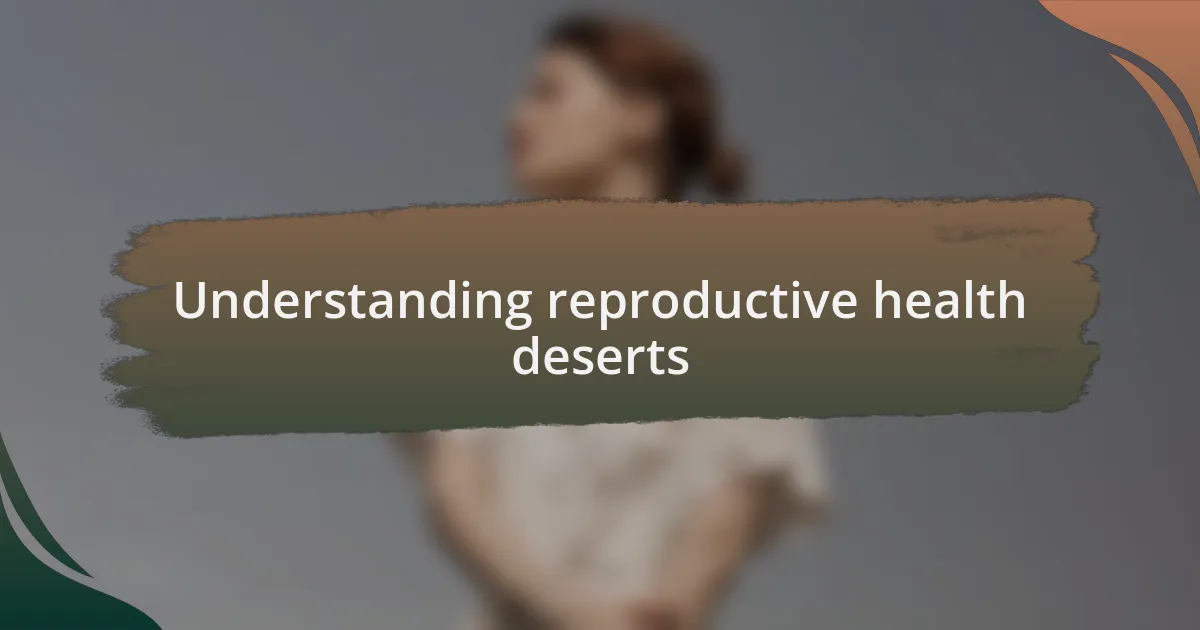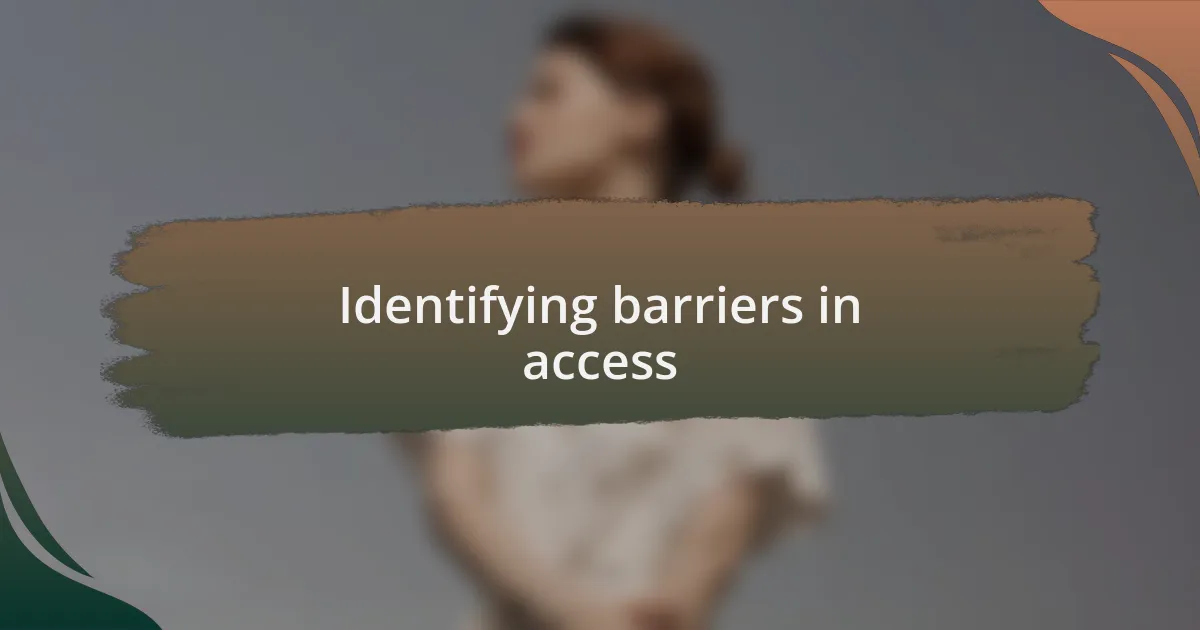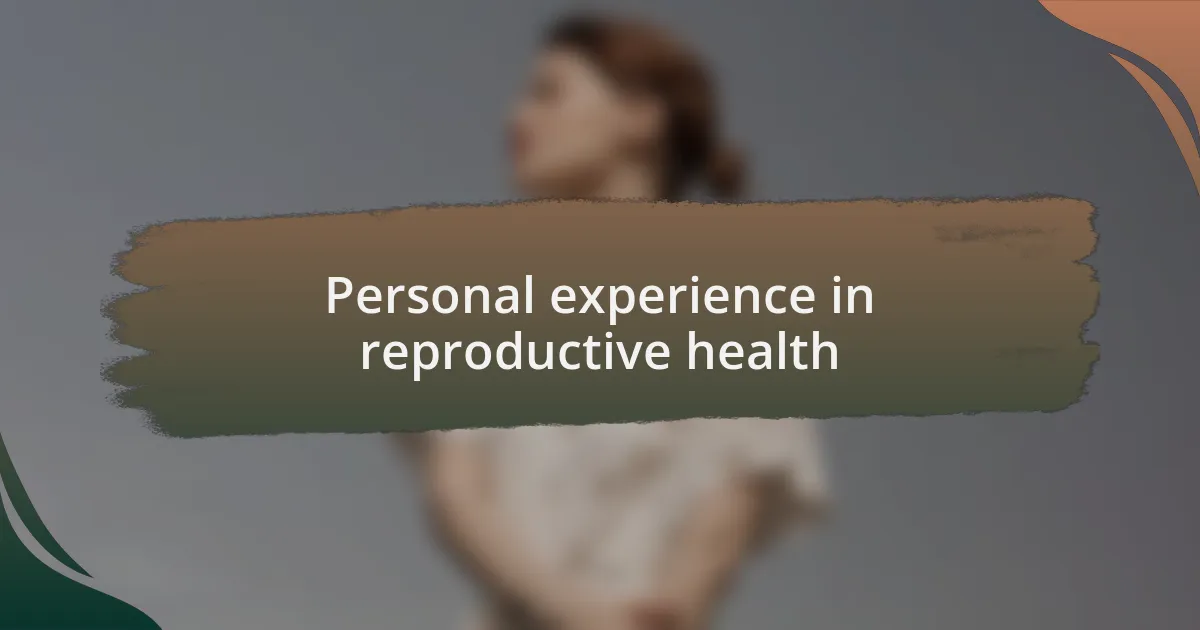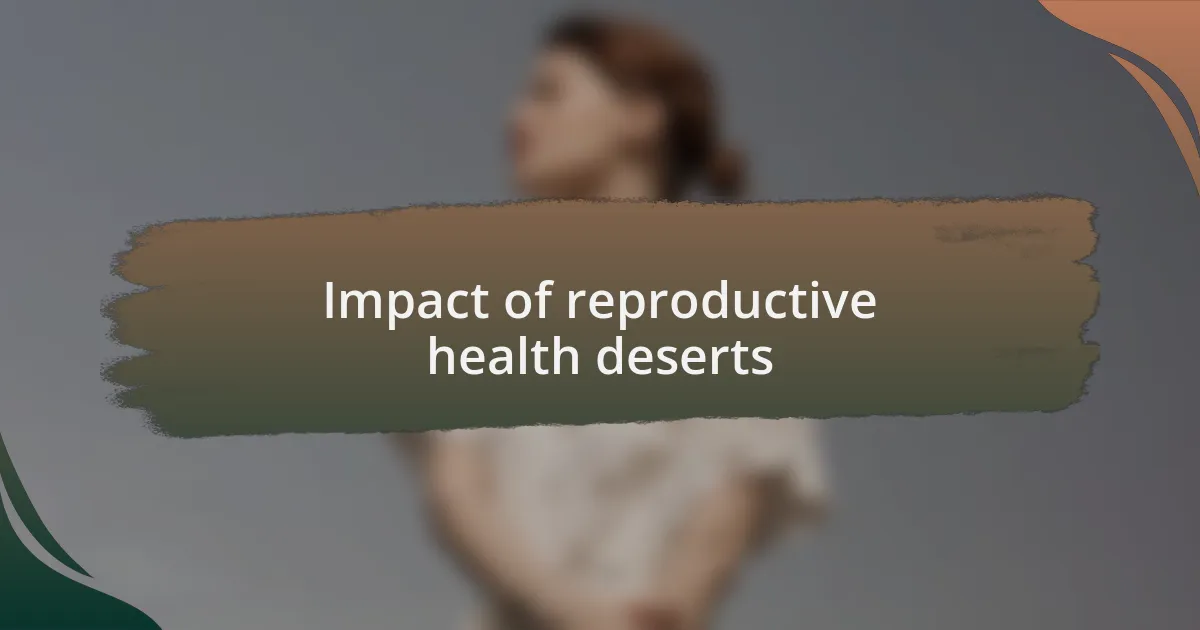Key takeaways:
- Reproductive health deserts limit access to essential services, leading to emotional struggles and higher rates of unintended pregnancies.
- Women’s health advocacy is vital for dismantling barriers and empowering women to access their health rights and services.
- Barriers such as stigma, language, transportation, and financial constraints significantly impact women’s ability to seek reproductive health care.
- Solutions like telehealth programs and mobile clinics can improve access and support for women in underserved communities.

Understanding reproductive health deserts
Reproductive health deserts are areas where access to essential reproductive health services, like contraceptives and maternal care, is severely limited. I remember visiting a rural town where the closest clinic was over an hour away. It struck me how this geographic isolation could deter women from seeking care or receiving necessary education about their health.
Living in a reproductive health desert can lead to a variety of emotional struggles. I recall speaking with a friend who felt the weight of anxiety because she couldn’t access birth control easily. How would you feel if something as fundamental as family planning was out of reach? It can create a sense of powerlessness and frustration that weighs heavily on women’s daily lives.
What’s alarming is that reproductive health deserts often coincide with poorer socio-economic conditions. In my experience volunteering in underserved areas, I witnessed firsthand how lack of resources can lead to higher rates of unintended pregnancies and other health issues. We need to ask ourselves: how can we bridge this gap and ensure every woman has the opportunity to access the care she deserves?
Importance of women’s health advocacy
Advocating for women’s health is crucial in dismantling the barriers imposed by reproductive health deserts. I recall a community workshop where we discussed the significance of educating women about their rights to health services. It became clear that without advocacy, many women remain unaware of their options, perpetuating cycles of ignorance and limiting their personal agency.
This advocacy isn’t just about access; it’s about empowerment. I remember a local health campaign that empowered women to share their experiences, fostering a sense of community and solidarity. It made me realize how powerful it is when women come together to demand change—not just for themselves but for future generations.
Moreover, women’s health advocacy can lead to systemic transformation. Reflecting on my time at a reproductive health conference, I recognized the passionate voices fighting for policy changes that improve access. Isn’t it inspiring to think that collective action can reshape healthcare infrastructure, ensuring that every woman has the opportunity to lead a healthy life? By raising awareness, we can challenge societal norms and advocate for a world where women’s health is prioritized, not dismissed.

Identifying barriers in access
Identifying barriers in access to reproductive health services can be an eye-opening experience. I remember volunteering at a healthcare clinic where many women expressed fear about seeking help due to stigma and judgment from their communities. Listening to their stories reinforced my belief that societal attitudes often create invisible walls that prevent women from accessing essential care. How can we expect women to seek help when they feel shamed for doing so?
Language and transportation are also significant barriers that often go unnoticed. I witnessed this firsthand during a community outreach event when a woman disclosed that she didn’t seek prenatal care because she couldn’t find anyone to translate during appointments. It made me realize that even the most qualified healthcare providers can’t reach women if communication is a barrier. How often do we overlook the role of language in healthcare?
Lastly, I’ve encountered the chilling reality of financial constraints blocking access for many women. During discussions with peers, I learned about a friend who avoided a necessary consultation because she feared the cost would burden her family. This experience opened my eyes to the fact that without affordable health options, many are forced to choose between their well-being and financial security. Isn’t it disheartening to think that something so essential could be out of reach simply due to economic factors?

Personal experience in reproductive health
My journey in understanding reproductive health took on a new depth when I volunteered for a women’s support group. One day, a mother shared how she had to wait weeks for an appointment simply because the clinic was located miles away. Her frustration was palpable, and it made me reflect on how physical distance can be an immense obstacle for many seeking critical care. Isn’t it astonishing that the very places designed to offer support can, through their location, create further isolation?
I’ve also personally felt the pangs of urgency in my own reproductive health journey. When I was due for a gynecological exam, I remember hesitating because I was unsure if my insurance would cover it. It struck me how many women might avoid crucial check-ups due to uncertainty about costs or network coverage. Why should anyone have to weigh their health against their financial situation?
Additionally, I can think back to a moment when I attended a community health fair. There, I met several women who shared their stories of navigating the healthcare system, and many felt lost in the process. Their tales revealed not just a lack of services but an emotional burden, one that lingered long after our conversations ended. It made me wonder: how many women silently suffer in similar ways, lacking both guidance and resources?

Impact of reproductive health deserts
The impact of reproductive health deserts is profoundly felt on a personal level. I recall meeting a woman who traveled over an hour just to access basic reproductive services. For her, the journey wasn’t merely about distance—it drained her financially and emotionally, leading to missed appointments and delaying crucial care. How much longer would she continue this exhausting routine, all to receive the health support she deserves?
Another striking aspect I’ve noticed is the psychological toll that reproductive health deserts impose. Chatting with a friend who faced infertility, it was heartbreaking to hear how the lack of nearby specialists added layers of shame and helplessness to her struggle. She often questioned if her issues were exacerbated by not having immediate access to expert care. Isn’t it tragic that a woman’s health journey should be so intertwined with geography?
Moreover, I’ve seen firsthand how these deserts perpetuate cycles of misinformation. During a community workshop, several attendees voiced confusion over basic reproductive health topics simply because they lacked resources. It struck me that when access is limited, misinformation flourishes, leaving women vulnerable and misinformed. How can we expect to foster a healthy community when knowledge is so far out of reach?

Solutions for improving access
One effective solution for improving access to reproductive health services is the implementation of telehealth programs. I remember when a friend of mine who lived in a remote area used a telemedicine platform to consult with a gynecologist. The convenience was a game changer; she felt relieved and empowered knowing she could access expert advice without the burden of travel. Isn’t it fascinating how technology can bridge gaps that once felt insurmountable?
Another promising approach is the establishment of mobile clinics that can reach underserved communities. I had the opportunity to volunteer with a mobile unit that provided reproductive health screenings in rural neighborhoods. Witnessing the relief on women’s faces when they received care within their own communities was incredibly moving. Why should anyone have to choose between their health and the accessibility of services?
Additionally, fostering partnerships with local organizations can enhance outreach and education efforts. I once attended a community event where local leaders helped disseminate vital information about reproductive health resources. The atmosphere was encouraging and supportive, and it made me realize that when communities come together, they can create networks of support that empower women. What if every community could have that same sense of collaboration and understanding?